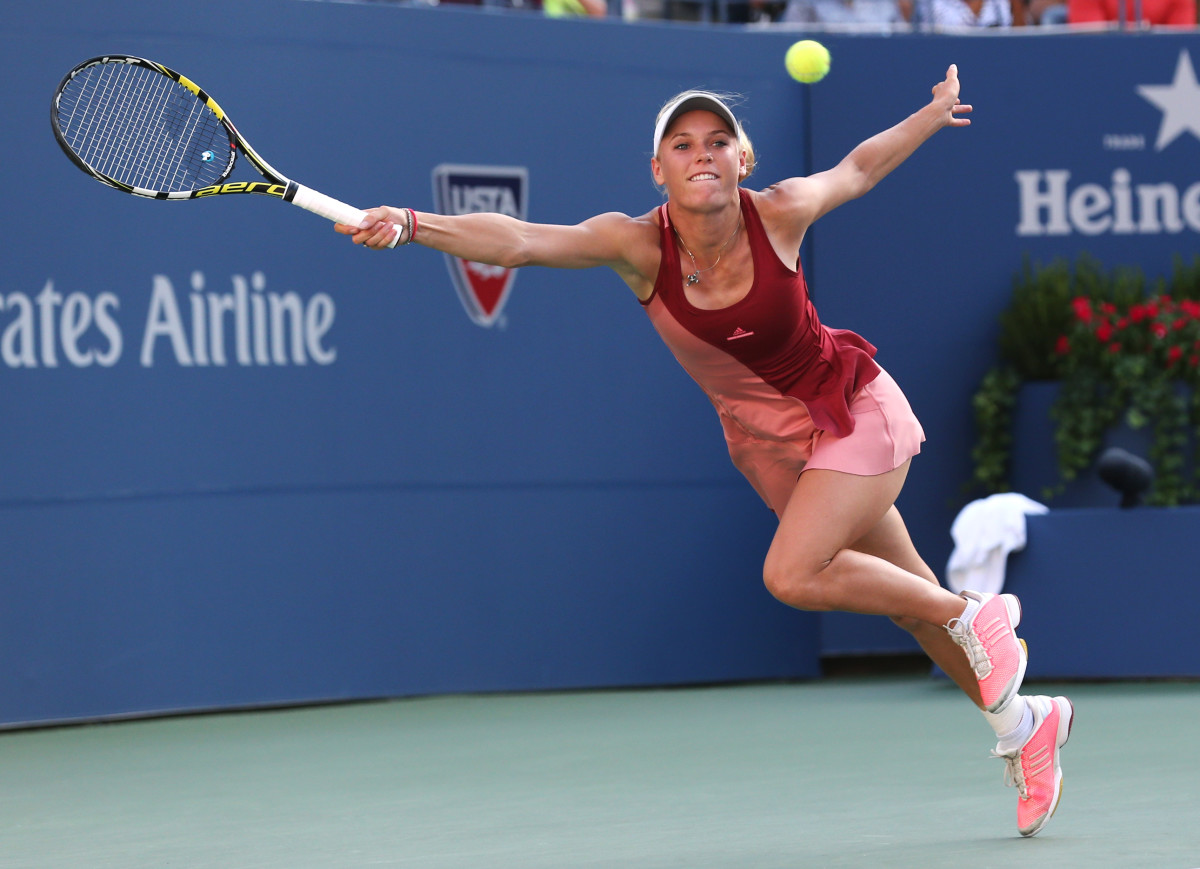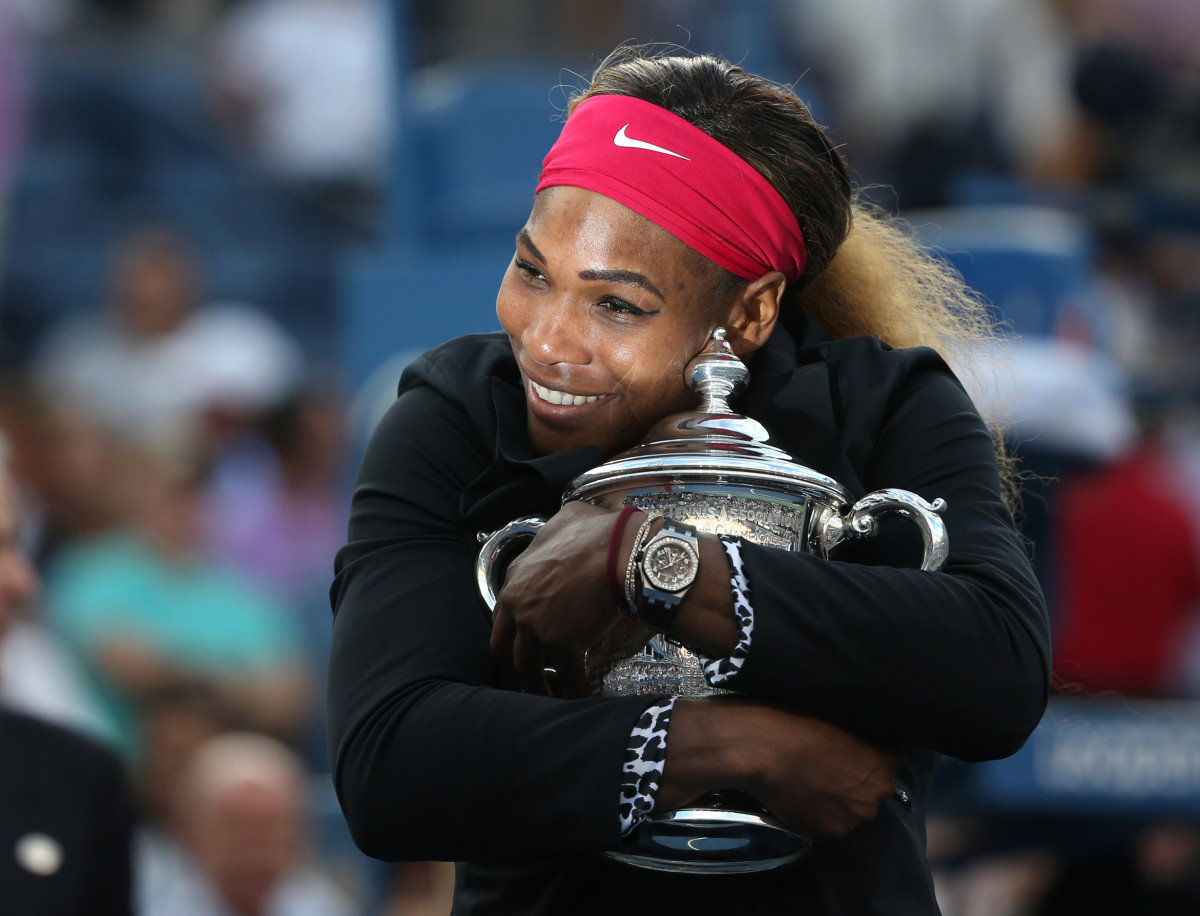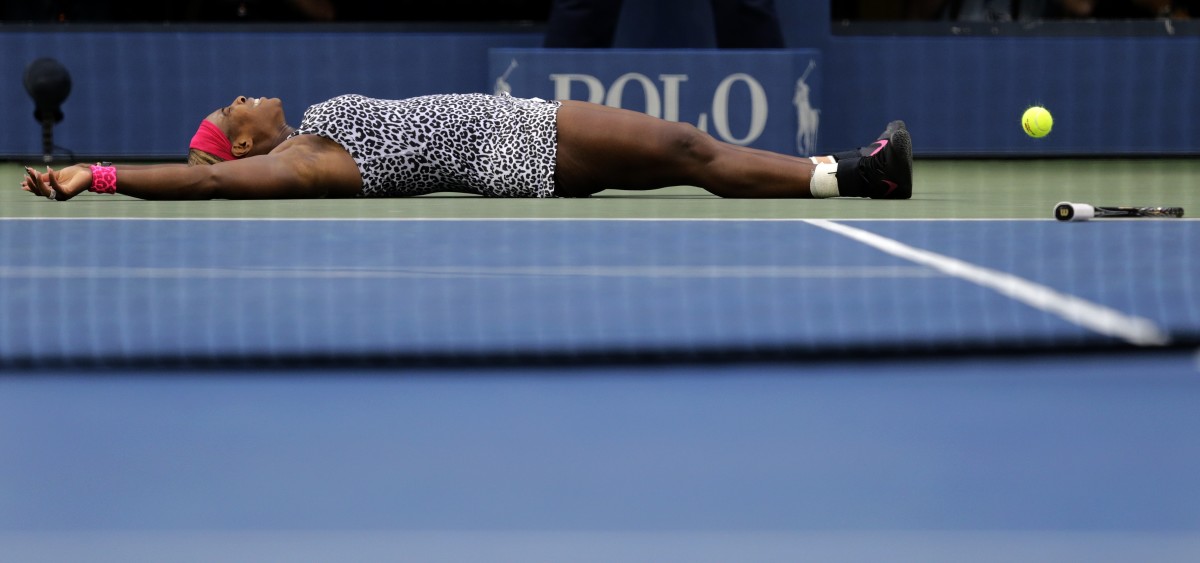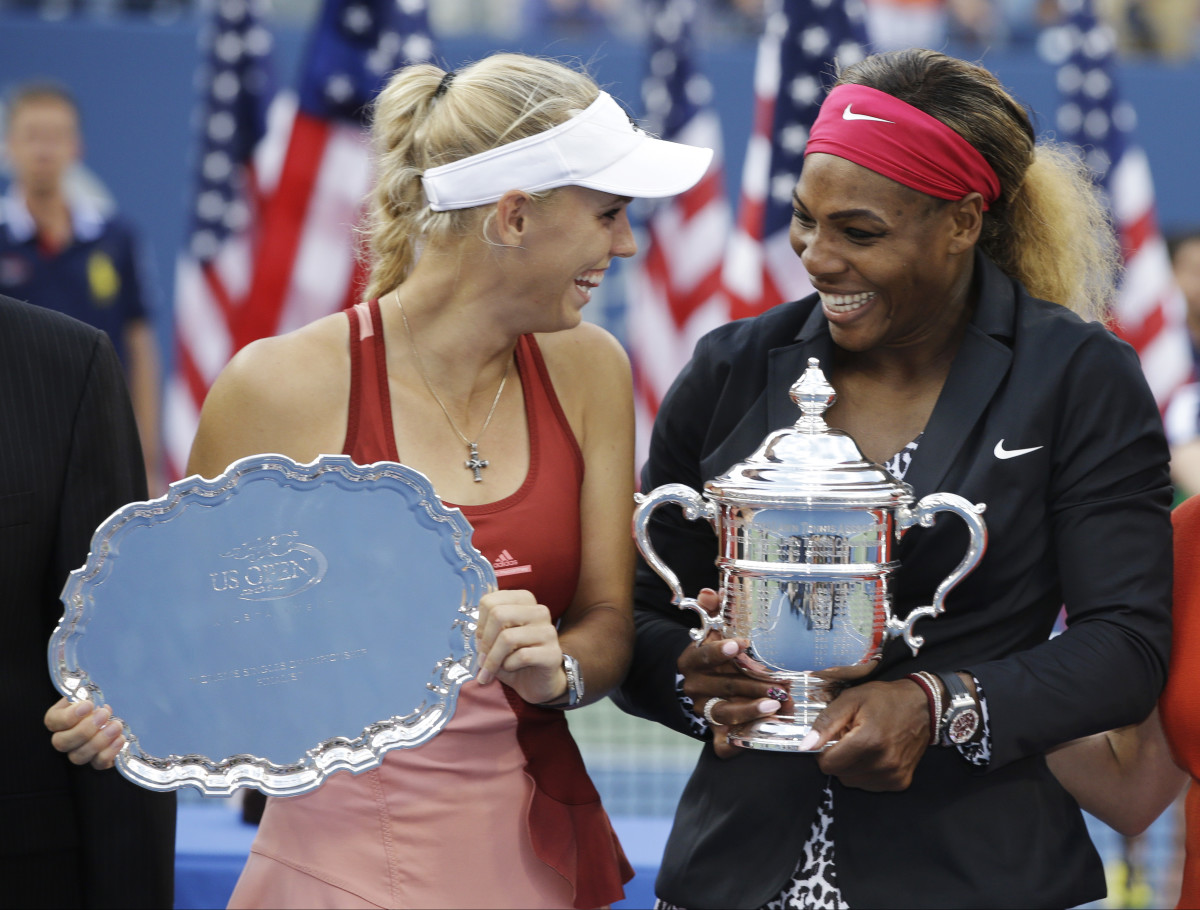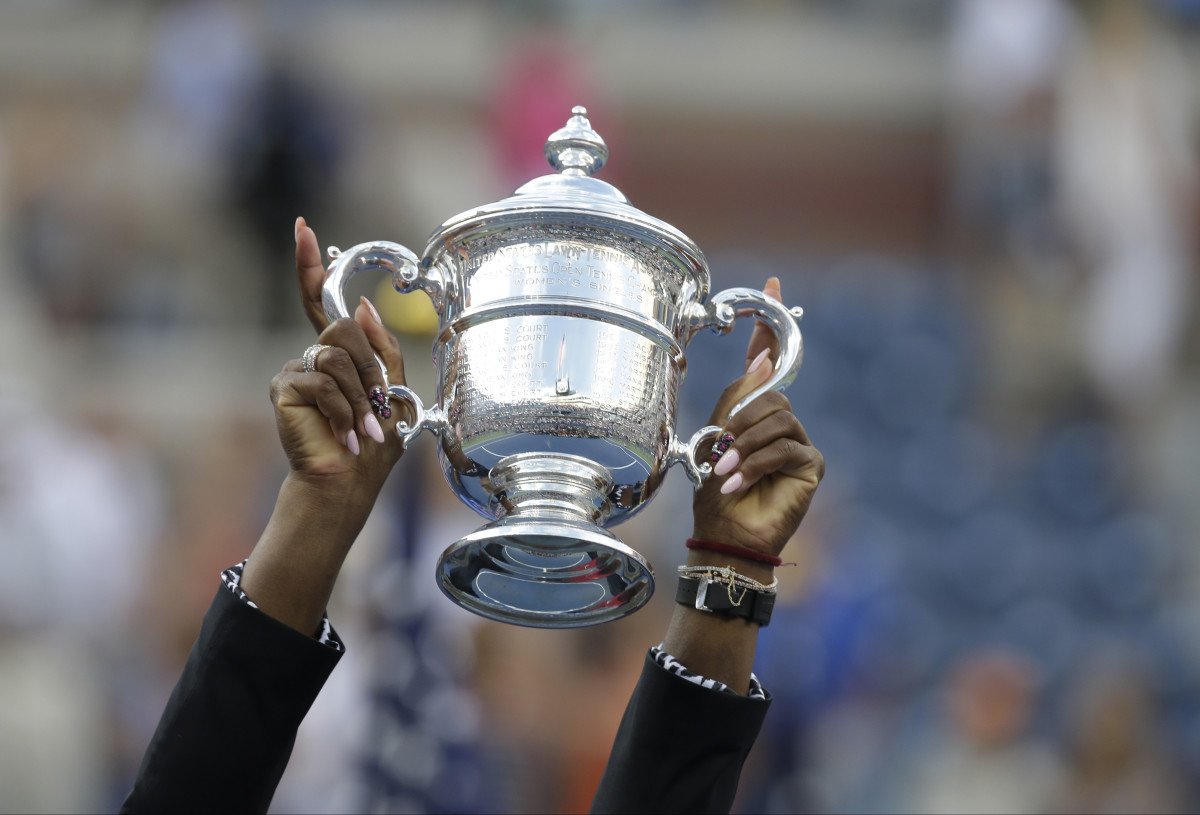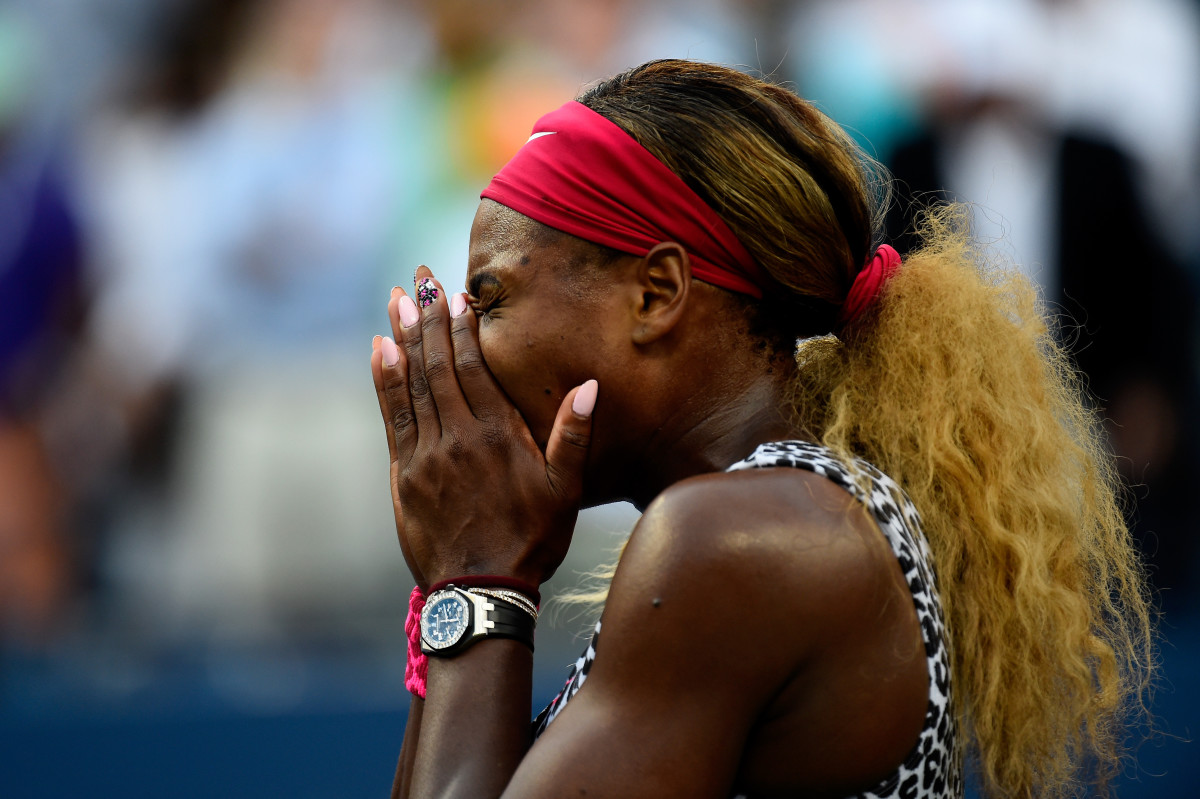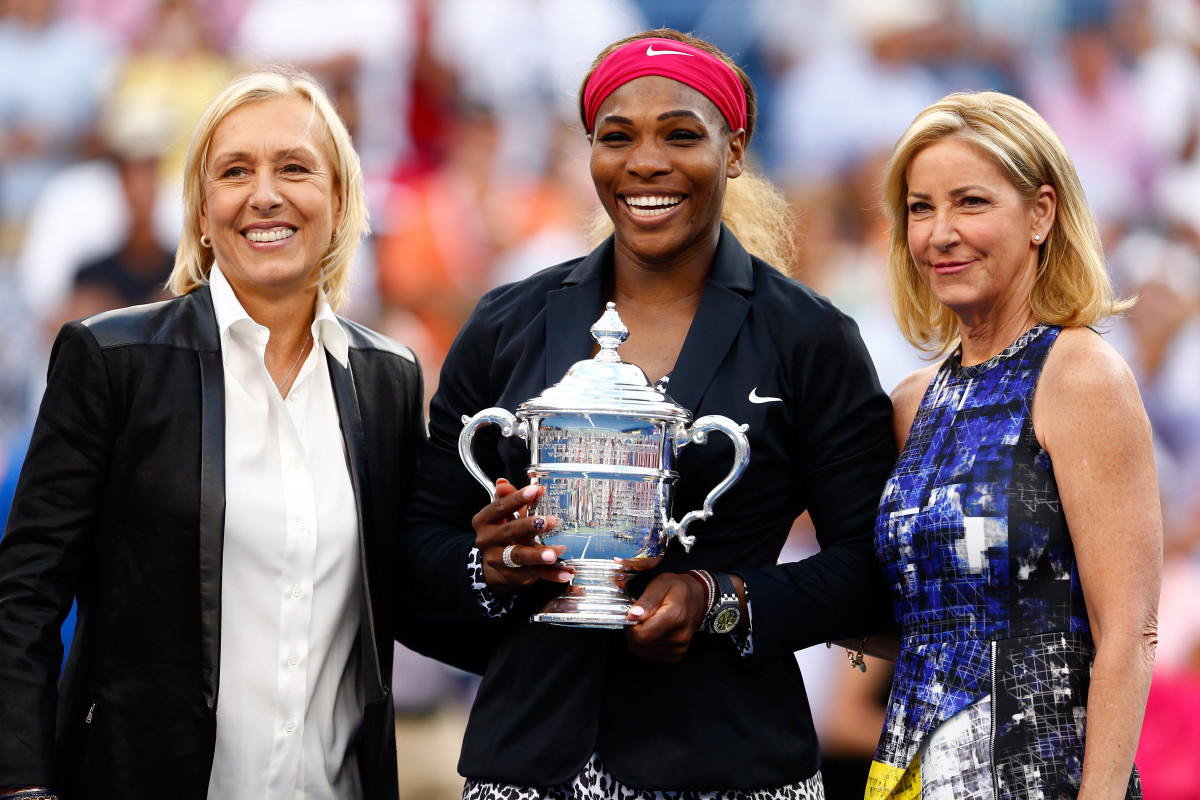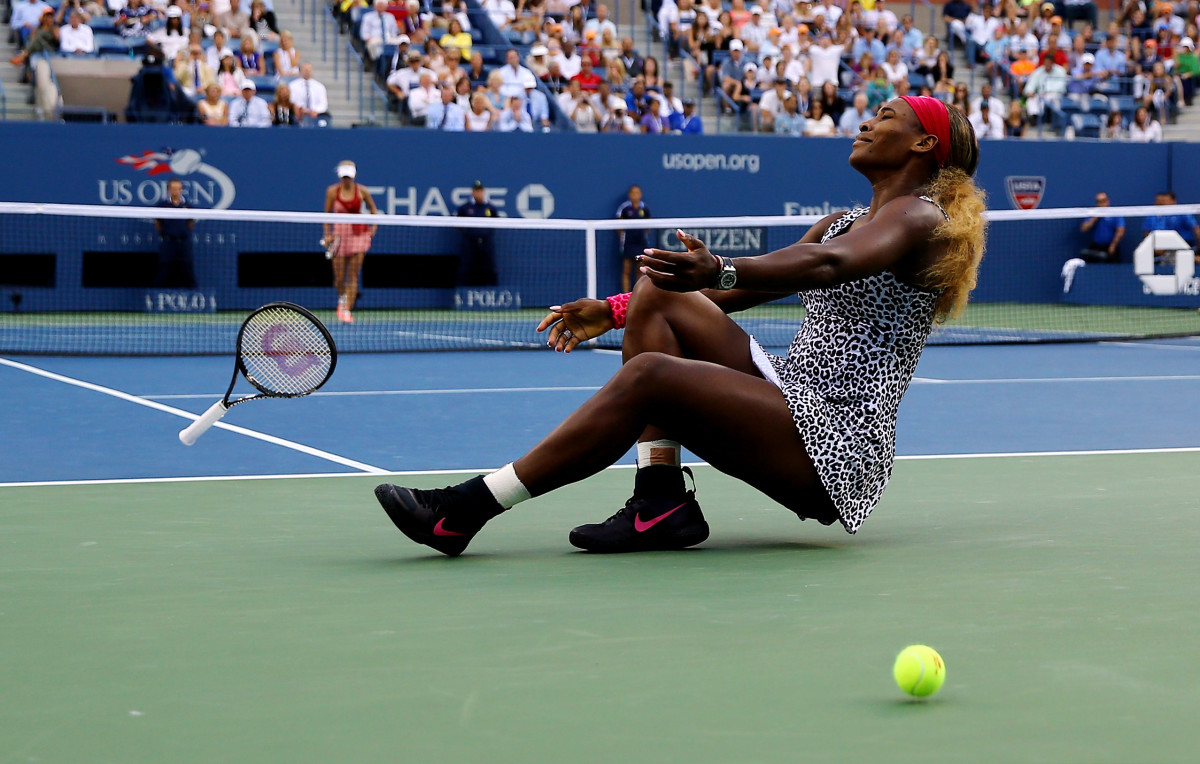Latest U.S. Open win shows Serena Williams' growth on and off the court

NEW YORK -- Caroline Wozniacki is many things to Serena Williams: Someone she can text for no reason, crash a beachside wedding with on a whim, or clink a few glasses with after work.
In the wake of Sunday’s U.S. Open women’s final, Wozniacki became more to Williams: A frenemy, a sweet but formidable obstacle in her march toward history. Yes, Williams blew her out of Arthur Ashe Stadium, 6-3, 6-3, on the way to claiming an 18th Grand Slam singles title, but it wasn’t easy.
That’s not to suggest that anything was amiss with Williams’ tennis, even though the top-seeded American didn’t play at her absolute peak. Still, she wasn’t far from it. Her groundstrokes were smooth and powerful, her footwork was cat quick and her serve pretty much went wherever it wanted.
That wall was slow to come back up on Sunday. There was no escaping the notion that something was pinning Williams down and keeping her from taking her game to levels others can only imagine. But what?
Serena Williams wins U.S. Open for 18th Grand Slam title
Goodness knows, she had her pick of burdens: The pressure of joining Chris Evert, Martina Navratilova and Steffi Graf in the 18-and-above single ladies club (est. in 1968). The specter of a bizarre Wimbledon fortnight that threatened to become the oft-cited tipping point of a sudden decline.
Her friendship with Wozniacki? That was supposed to be light, even though it couldn’t be more improbable. If there’s a facet of Williams’ game that has demanded the most refinement, it’s her ability to give credit to her opponents. Lose, and she’d sooner tell reporters her game was off than compliment the other woman’s game; never mind that this explanation only became more credible over time.
And even when Williams improved in the respect-paying department, she still wasn’t picking up tour friends as easily as she was titles. Perhaps that’s why she has so many, and is already eyeing slam No. 19.
PRICE: Serena is a walking contradiction of excellence on the court
Still, she couldn’t help but be drawn in by Wozniacki -- a woman who has yet to say a cross word, in public or private, about ex-fiancé Rory McIlroy in the wake of their public breakup; a woman Williams has gone as far as crediting for making her a better person. “She’s funny, she’s nice, she’s supportive,” Williams says. “I can take my wall down a little bit with her and be who I am a little bit. It’s nice when you can do that with someone.”
Was Serena's odd Wimbledon a sign of final fade or fuel for resurgence?
But early in the match, it seemed, the wall was slow to come up. Rallies were few, errors piled up. The tightness recalled Williams’ big trophy matches against her big sister Venus. And then it vanished, gradually, like the swath of sun that covered the east end of the court.
Before you knew it, Williams had gone back to being the runaway train who hadn’t conceded more than three games per set all tournament. The only shame is that Wozniacki, who hit 15 unforced errors against four winners, couldn’t mount as stiff a challenge in the final round as she did through her first six -- or even her last two meetings against Williams, both of which required a third set. “When Serena’s on her game, there’s not much we can do,” Wozniacki said.
But why not? Friends are supposed to push each other. Certainly Roger Federer and Rafael Nadal did, and the men’s game was better for it. Evert and Navratilova did as much for the women’s side, but their competitive fire burned too hot for a true friendship to flourish. It was only in retirement, after they had picked up 18 majors apiece, that things became truly cool between them.
Classic photos of Serena Williams
After Williams notched her biggest victory yet, in just an hour and 15 minutes time, Evert and Navratilova met Williams on Ashe court and presented her with a gold Tiffany bracelet; its centerpiece was a charm inscribed with the number 18 -- a nod to the three-sister sorority Williams now joins. Then the USTA presented her with a check for $4 million -- the standard rate for presiding over this tournament and hardcourt series that precedes it, and an amount more than five times greater than the first U.S. Open winner’s check she received in 1999.
The uniqueness of Serena Williams
Back then she was just a teenager, and winning the US Open was her greatest ambition. The idea that she could win six and tie Evert (again) for another Open era best, well, “I just never could’ve imagined that,” Williams said. Just as unfathomable is the idea that Williams could face Venus in two straight US Open finals and beat her the second time around, in 2002.
But those contests tested a different bond, one that can only be forged through the formative experience of sharing a rickety bunk bed and cracked tennis courts in Compton. The tension of those sibling rivalries on Ashe was thick with deference, and slow to disperse even after the final ball was struck.
WERTHEIM: Longevity a hallmark of Williams sisters' careers
Whatever tension remained between Williams and Wozniacki was fully clear by match point -- a long Wozniacki backhand. Williams fell backwards onto the ground, covered her face and hyperventilated with excitement. As she rose to her feet again, Wozniacki came around the net and was waiting with a warm embrace.
During the trophy presentation the pair was all smiles. Williams lavished Wozniacki with praise, and Wozniacki responded in kind. “You’re an unbelievable friend,” she said. “You definitely owe drinks later.”
“I will definitely buy,” Williams said in the news conference that followed. The fact that this was even a conversation was as stunning as the selfie that crossed Twitter later, of the two women out on the town. Magnanimity comes with the territory when you’re become a champion. That Williams can now dominate without being so domineering might be the truest mark of how far she’s come.
GALLERY: Best shots from Serena's landmark U.S. Open win
Serena Williams dominates the U.S. Open final match

